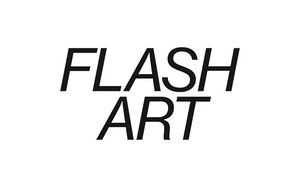The cover of this issue features an early work by Jutta Koether, a central figure in the recent history of painting and the subject of a survey exhibition opening later this month at Museum Brandhorst, Munich. Since the 1980s, Koether has engaged in an intimate “battle” against painterly tradition, developing a defiant artistic practice able to sketch out a counterhistory of the modernist, male-dominated and heteronormative canon. As Kerstin Stakemeier writes in one of the contributions to the 20-page dossier dedicated to Koether that this issue also features, “Koether does not legitimize herself against painterly tradition, but rather lets its accumulated unmodernness come to her.” Stakemeier discusses Koether’s practice in the gendered and art-historical afterlife of mannerism, underlining the artist’s agenda to reconfigure her references “under female competence.” “Koether’s application of painting history ‘under female competence’ changes its societal position entirely,” Stakemeier concludes.
In addition to an article by Quinn Latimer considering Koether’s novella f., the dossier includes a reprint of one of Koether’s many contributions to Flash Art. In “Pure Invention,” first published in the April 1986 issue of the magazine, Koether reflects on a group of her female artist peers who have defied the status quo—from Georgia O’Keeffe to Cindy Sherman, from Jenny Holzer to Rosemarie Trockel. “Women artists are obsessively afraid of being understood as just that, as women artists,” Koether writes. “Often they prefer to lurk anonymously and mutely in isolation, considering intervention in history as a burden. It isn’t their history anyway.” Countering what she calls the “embarrassing and sick excesses of self-recrimination” of 1970s feminist art, Koether invites women artists to “speak up” by developing creative strategies that transcend a discourse of self with pure artistic invention. In Koether’s vision for female art “defensiveness is forbidden.”
Also in this issue:
Ericka Beckman discusses with Attilia Fattori Franchini her pioneering works in film, sound, performance, and installation.
“I made films about subjects that offended me in a personal way, transforming subsequently the concept of the subversive as a tactic. I was very interested in making films that seemed to be, on the one hand, colorful, playful, easy to watch, while suggesting a sharp critique of social attitudes.” –Ericka Beckman
Nana Adusei-Poku on Julia Phillips’s sculptures beyond the binary
“Phillips’s work speaks to the simultaneous fragility and power of the ideologies that dominate our lives, interactions, and emotional landscapes, whether they are normative, gendered, or racialized.” –Nana Adusei-Poku
Kamasi Washington meets with Hans Ulrich Obrist. Together they retrace some of the “epiphanies” that shaped the musician’s unmistakable groove.
“I might play a wrong note, but if I play it in the right way and at the right time, it could be cool anyway.” –Kamasi Washington
Michele D’Aurizio talks to Yngve Holen about his new body of work called Rose Painting.
“It’s taking an alloy object and transferring it to wood, which is seen as this crafty, traditional format; but it’s obvious that the works were cut by a machine. You can see the tooling, and it’s still rough, with all the tears and cracks and knots. It appropriates the object, but it also undermines classical methods of sculpture.” –Yngve Holen
Tess Edmonson on adapting Archie in the CW’s Riverdale
“The dramatic departures from Archie convention place the Riverdale universe in a temporal uncanny, where its WWII-era stock characters are retrofitted for eternal youth.” –Tess Edmonson
Wendy Vogel on Alexandra Pirici’s materiality-burdened performances
“What Pirici’s pieces brings to light are the complications around capture and, in a moment that is marked as deeply by the #metoo movement as anticolonial sentiment, notions of consent beyond physical death.” –Wendy Vogel
Reviews
Coop Fund, Amalle Dublon & Constantina Zavitsanos, Devin Kenny, John Neff at Artists Space, New York; Oliver Laric at Metro Pictures, New York; Renée Green at Carpenter Center, Cambridge (MA); Nina Könnemann at Gaga, Los Angeles; Harald Szeemann: Museum of Obsessions at Getty Research Institute, Los Angeles; Luciana Lamothe at Ruth Benzacar, Buenos Aires; Mark Dion at Whitechapel Gallery, London; Matthijs de Bruijne at BAK, Utrecht; Ellen Cantor at Isabella Bortolozzi, Berlin; Adriano Costa at Kölnischer Kunstverein, Cologne; Cally Spooner at Centre d’Art Contemporain, Geneva; Joe Scanlan at Martin Janda, Vienna; Matthew Lutz-Kinoy at Le Consortium, Dijon; Crash Test at La Panacée, Montpellier; Cinzia Ruggeri at Federico Vavassori, Milan; Edi Hila at the Museum of Modern Art, Warsaw; Apostolos Georgiou at Frank F. Yang Art and Education Foundation, Shenzhen; 21st Biennale of Sydney.

